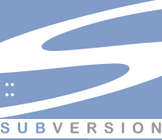Last night, I added several database profiles to AppFuse 2.0 and its archetypes. What does this mean? It means AppFuse should work out-of-the-box with several databases, including:
- H2
- HSQLDB
- MySQL
- PostgreSQL
- SQL Server
For example, here's how to test a new AppFuse project works with H2:
mvn archetype:create -DarchetypeGroupId=org.appfuse -DarchetypeArtifactId=appfuse-basic-struts -DremoteRepositories=http://static.appfuse.org/repository -DarchetypeVersion=1.0-m4-SNAPSHOT -DgroupId=com.mycompany -DartifactId=myproject
Yeah, I wish there was a way to shorten this command (or prompt for choices) too.
After doing this, you can cd into the "myproject" directory and run mvn integration-test -Ph2. AppFuse 2.0 projects are configured for MySQL by default, so if you want to permanently activate one of these profiles, you can add the following between the <id> and <properties> section of the profile.
<activation>
<activeByDefault>true</activeByDefault>
</activation>
In addition to the profiles listed above, I tried to get Oracle Express and embedded Derby working. No dice on either one. I took a brief look at DB2 Express as well, but with a 400 MB download and 3 JARs required for its JDBC Driver - it seemed like a lot more trouble than it was worth.
Maven 2's build profiles are a powerful feature that we hope to make easy to use. For example, to test your new project with H2 and JBoss, you can simply run mvn integration-test -Ph2,jboss. Thanks to the power of Cargo, this will download JBoss 4.0.5, install it, and run all the Canoo WebTests within it. Of course, this will take a while the first time - especially since JBoss is a 77MB download. Fortunately, we allow you to change one small setting in your pom.xml and use an existing install instead.
Maven 2 is a kick-ass build/deploy/test tool once you figure it out. With AppFuse 2.0, we're doing all the "figuring out" for you. 
NOTE: I would add more server profiles, but Cargo's Maven Plugin (version 0.2) has issues with Geronimo 1.1, Jetty 6.x and Resin 3.x. Strangely enough, Jetty's Maven Plugin version 6.0.0 works great, but 6.1.0 throws stack traces.
Update: Support for Oracle and Derby (in networked mode) has been added. We'll consider adding support for DB2 if IBM can figure out how to package their JDBC Driver into a single JAR.




